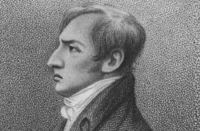In 1985, Soviet Belarusian anti-war film Come and See, written and directed by Elem Klimov, was finally released. The film follows the story of a young boy from a rural village. He joins the partisans to fight off the nazi army invading the country and through his experiences, we see the true horrors of war. You see from the perspective of the civilians and the untrained partisans. Florian starts off excited to go and fight to free his country and ends up as a hollow shell. You see soldiers very briefly as they commit the atrocities of mass murder. When captured one of them shows no remorse and vows that the nazi forces will complete the genocide of the Soviets while the others beg to be spared. For eight years, filming was delayed as the State Committee for Cinematography rejected the screenplay as it was considered “too realistic.” This reasoning isn’t an exaggeration. Klimov in an interview said
“I had been reading and rereading the book I Am from the Fiery Village, which consisted of the first-hand accounts of people who miraculously survived the horrors of the fascist genocide in Belorussia. And then I thought: the world doesn’t know about Khatyn! They know about Katyn, about the massacre of the Polish officers there. But they don’t know about Belorussia. Even though more than 600 villages were burned there! The events with the people, the peasants, actually happened as shown in the film. [It] doesn’t have any professional actors. Even the language spoken in the film is Belarusian. What was important was that all the events depicted in the film really did happen in Belarus. I understood that this would be a very brutal film and that it was unlikely that people would be able to watch it. I told this to my screenplay co-author, the writer Ales Adamovich. But he replied: ‘Let them not watch it, then. This is something we must leave after us. As evidence of war, and as a plea for peace.'”
In comparison, films like Schindler’s List and All Quiet on the Western Front have a similar anti-war message. Schindler’s List is the most similar of the two, showing the horrors of the holocaust from the viewpoint of those in the concentration camps and their families. All Quiet on the Western Front, originally a book written by a German veteran of the First World War, has been adapted into a film. The film follows a German soldier as he and his friends sign up to join the war effort. However, as the movie goes on he loses his comrades he begins to lose the enthusiasm he started with. When the war ends, the excitement of the ending of needless death is seen on the soldiers. These viewpoints are rarely shown in war movies made by the West for Western audiences. These are typically filled with the propaganda of “the good guys versus the bad guys”, with the good guys often being American and the bad guys being Russian, Chinese, Arab or in some movies made during the Cold War era, Spanish-speaking, hinting at Cuban or Communist aligned groups such as the Sandinistas at the time. This pro-war stance is consciously propagated to fuel enthusiasm for war. As pro-neutrality and anti-war activists, we have to combat this propaganda. What is happening in Palestine, Sudan and other regions today, as well as in the past, are not glory-filled battles of good against evil but mass destruction and mass civilian death. The film Come and See takes its name from a quote from the book of Revelations:
“I heard the voice of the fourth beast say, ‘Come and see!’ And I looked, and behold a pale horse: and his name that sat on him was Death, and Hell followed with him. And power was given unto them over the fourth part of the earth, to kill with sword, and with hunger, and with death, and with the beasts of the earth.”






